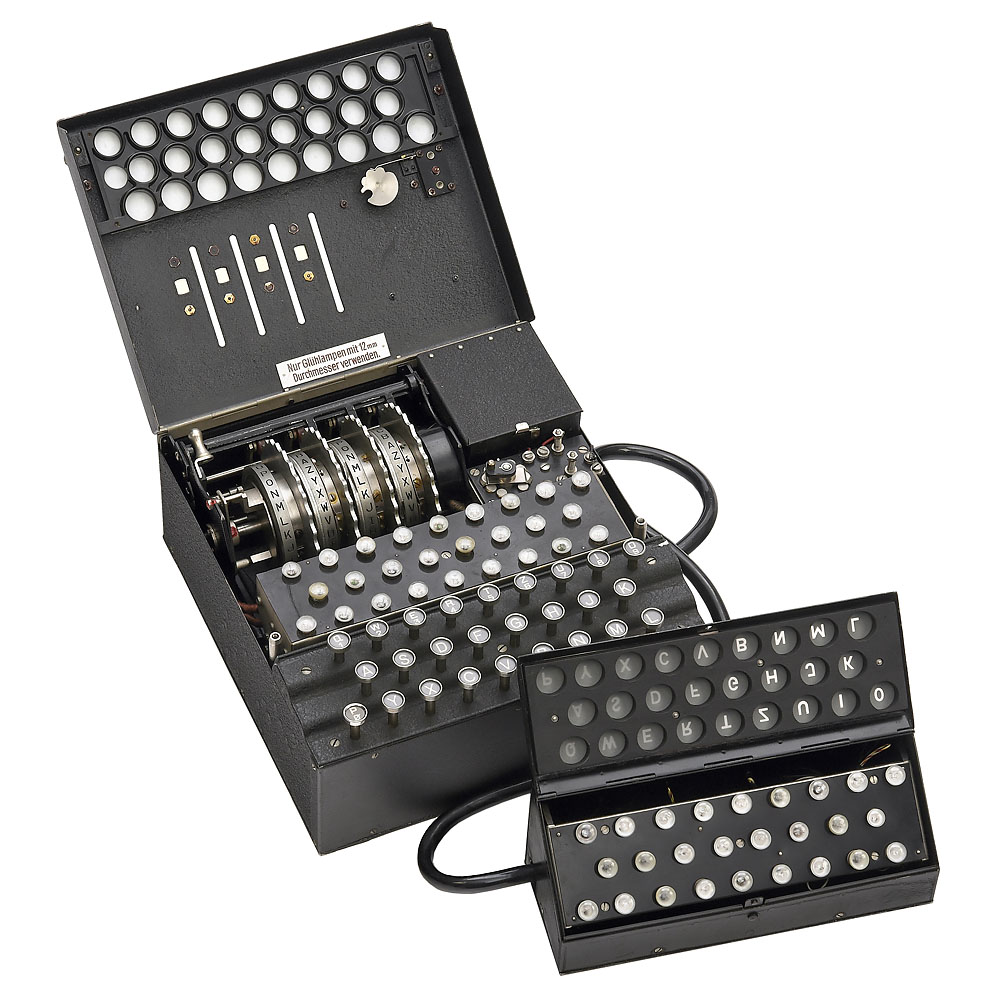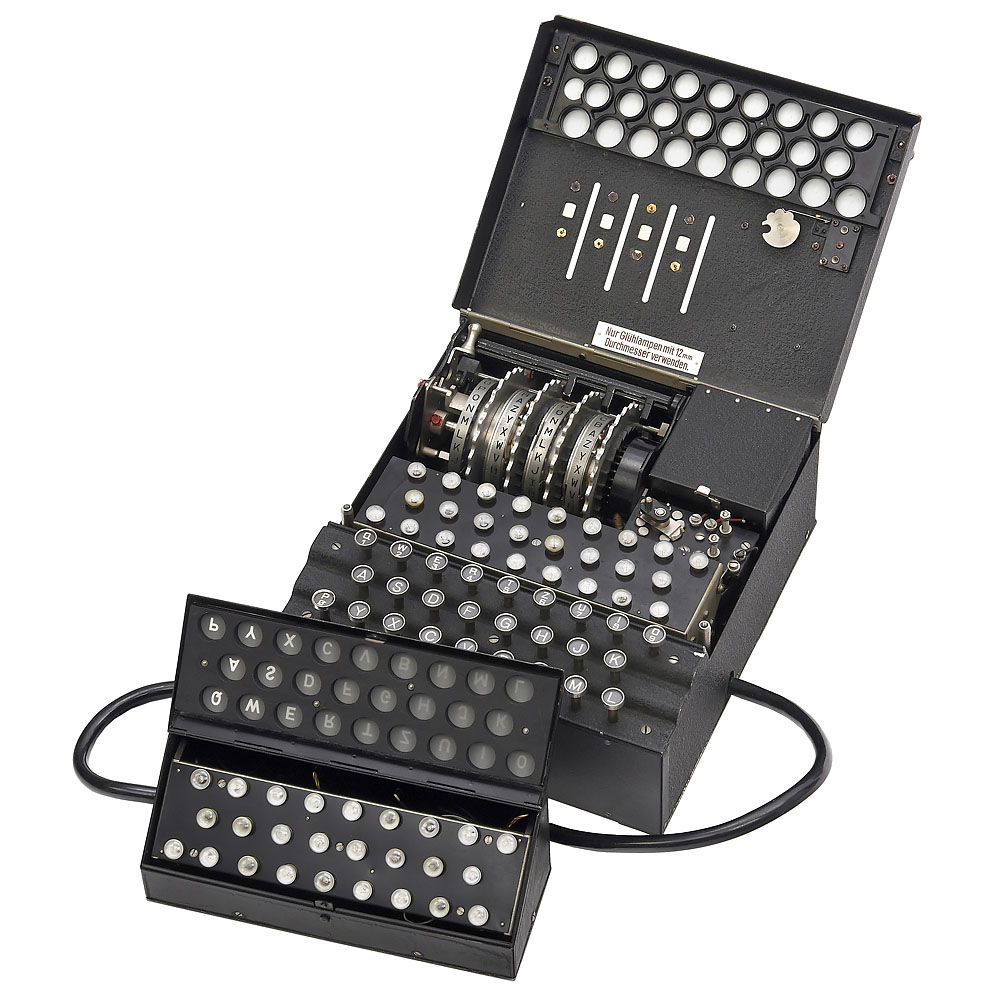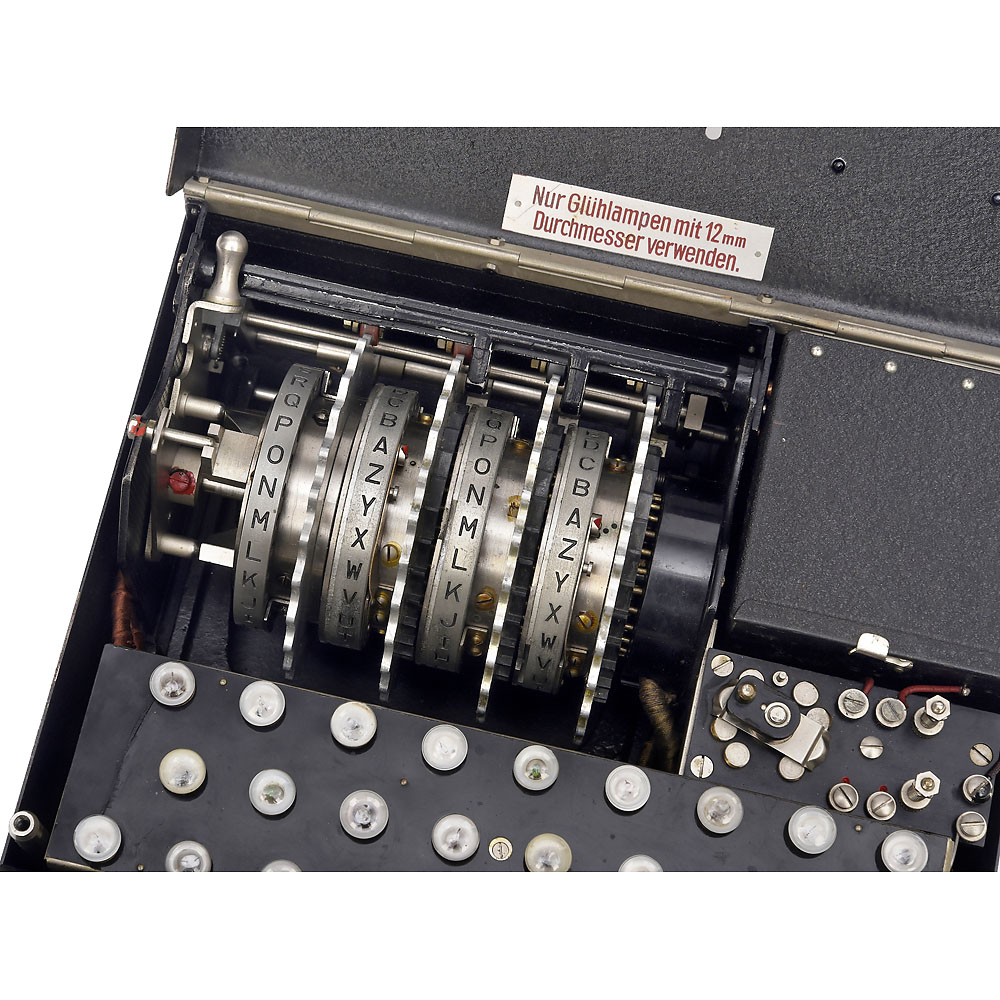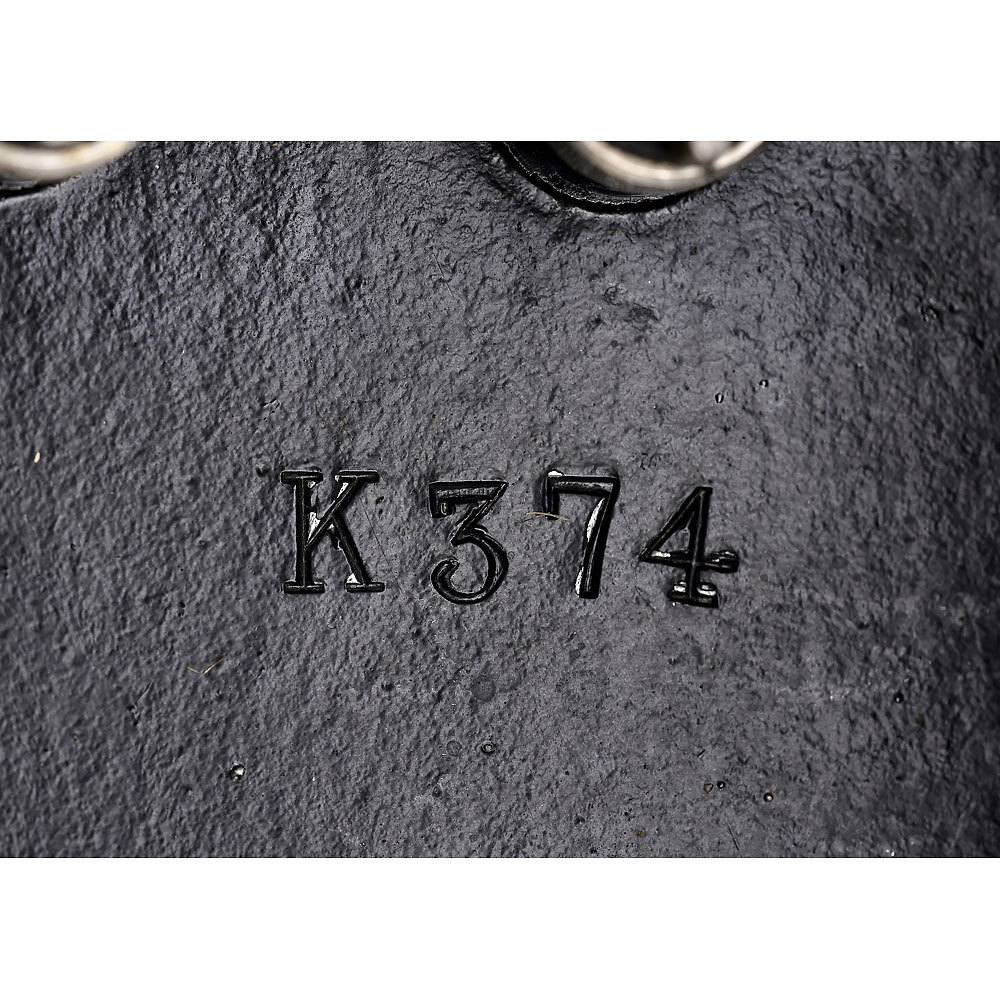Enigma Model K Ciphering Machine Enigma (K-Model) with Additional Lamp Panel, c. 1939
Starting bid: € 50.000 | Estimate: € 80.000 – 120.000
Manufactured by” Chiffriermaschinen-Ges. Heimsoeth und Rinke, Berlin. No. K374, with four-rotor set, numbered K347, K774I, K774II und K774III, black metal case and matching lamp panel, good original working condition, electrical functions unchecked. Note: – An important example of the legendary World War II ciphering machine developed by Berlin engineer Dr. Arthur Scherbius and first manufactured there commercially by the Chiffriermaschinen Aktiengesellschaft Berlin in 1923. So complex was the Enigma, it was considered capable of producing over 22 billion code combinations without a single repetition. According to an early prospectus, “if one man worked continuously day and night and tried a different cipher-key every minute, it would take him 42,000 years to exhaust all combination possibilities.” In operation, each keystroke illuminated a different character and caused one or more rotors to shift fractionally, so that a different combination was created every time. Decryption required codebooks and a list of daily key settings. – Good original working condition, electric functions checked. – A spectacular exhibition piece of fascinating history. The Enigma machine was the subject of the 2014 thriller “The Imitation Game”, with Benedict Cumberbatch as Bletchley Park’s mathematician Alan Turing, an historical fiction as it was in reality the Polish cryptologist Marian Rejewski who played the key role in cracking the code. – Literature: 1) Martin, p. 370; “Spiegel”, no. 47/1978.
Chiffriermaschine Enigma (K-Modell) mit zusätzlichem Fernlesegerät, um 1939
Historisch-legendäre deutsche Geheimschreibmaschine, die den Verlauf des 2. Weltkrieges entscheidend beeinflußt hat. Erfunden von Arthur Scherbius, Berlin, waren mit ihr 22 Milliarden (!) Code-Kombinationen ohne jede Wiederholung möglich. Bildlich gesehen, würde man jede Minute einen neuen Code benutzen und Tag und Nacht daran arbeiten, dann bräuchte man insgesamt 42.000 Jahre, um alle Code-Kombinationen auszuschöpfen. – Serien-Nr. K374, Walzen-Nr. K347, K774I, K774II und K774III. Für nicht-druckenden Einsatz bestimmt. Bei jedem Tastendruck leuchtet ein anderes Zeichen auf, das notiert werden muß. Auch der Druck auf dieselbe Taste führt immer wieder ein anderes Leuchtzeichen aus, ganz so, wie es der eingestellte Code zuläßt. Hersteller: Chiffriermaschinen-Ges. Heimsoeth und Rinke, Berlin. – Literatur: 1) Martin, S. 379. – 2) “Spiegel”, Nr. 47/1978, S. 121. – Gut funktionierender Originalzustand, elektrische Funktionen getestet. – Eines der ganz großen technisch-historischen Sammlungs- und Ausstellungsstücke.







